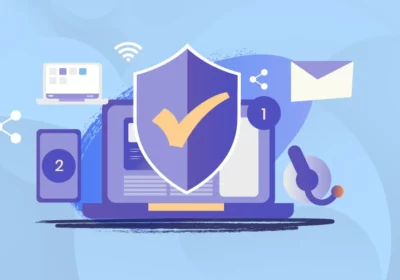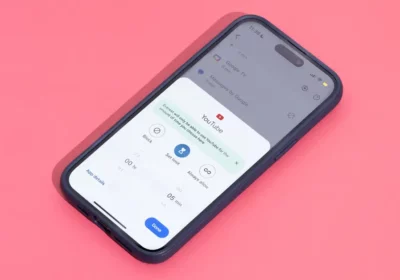Phone monitoring has become increasingly important for parents, employers, and individuals concerned about digital safety and security. While it offers valuable tools for tracking and managing phone activities, it’s essential to understand the costs associated with these services. In this comprehensive guide, we will explore the various factors that contribute to phone monitoring costs, different pricing models, and tips for managing expenses effectively.
Why Consider Phone Monitoring?
Before diving into the costs, it’s important to understand why phone monitoring is necessary:
- Child Safety: Parents use phone monitoring to protect their children from online threats, cyberbullying, and inappropriate content.
- Employee Productivity: Employers monitor company-issued phones to ensure employees are using them for work-related tasks and to enhance productivity.
- Security: Individuals use monitoring to locate lost or stolen phones, secure personal information, and protect against unauthorized access.
- Personal Well-being: In cases of domestic violence or stalking, phone monitoring can provide a sense of security.
Factors Contributing to Phone Monitoring Costs:
The cost of phone monitoring can vary based on several factors:
- Features and Capabilities: The more extensive the features and capabilities of the monitoring software, the higher the cost. Features like geofencing, call recording, and social media monitoring often come at a premium.
- Subscription Duration: Most phone monitoring services offer subscription plans that can be monthly, quarterly, or annual. Longer subscription durations often come with discounts.
- Number of Devices: If you need to monitor multiple devices, you’ll likely pay more for each additional device.
- Software Provider: Different software providers have varying pricing models. Some may offer free or low-cost plans with limited features, while others may provide comprehensive solutions at a higher price.
- Compatibility: The type of devices you want to monitor also influences the cost. Compatibility with different operating systems, such as Android and iOS, may require additional expenses.
Pricing Models for Phone Monitoring:
Phone monitoring services typically offer several pricing models to cater to different needs and budgets:
- Subscription Plans:
- Most phone monitoring services offer subscription plans that provide access to their monitoring features. These plans can be billed monthly, quarterly, or annually. Pricing often depends on the duration of the subscription and the number of devices you want to monitor. Longer subscriptions usually come with cost savings.
- Free Plans:
- Some monitoring services offer free plans with limited features. These can be an excellent option if you only need basic monitoring capabilities. However, they may not provide the full range of features needed for comprehensive phone monitoring.
- One-Time Purchase:
- A few monitoring software providers offer one-time purchase options. With this model, you pay a single fee to access the software without the need for ongoing subscriptions. This can be cost-effective for long-term use.
- Custom Pricing:
- Some providers offer custom pricing for businesses or individuals with specific needs. This may involve negotiation with the service provider to create a tailored plan.
- Additional Device Costs:
- If you want to monitor multiple devices, additional costs will apply for each device added to your subscription.
Understanding the Cost Structure:
Phone monitoring services have a cost structure that depends on the factors mentioned above. Here’s a breakdown of what you can expect:
- Subscription Fees: The core of the cost is the subscription fee, which can vary depending on the provider, duration, and number of devices.
- Device Compatibility: If you need to monitor both Android and iOS devices, your costs may increase, as compatibility often comes with an additional charge.
- Feature Add-Ons: Some services offer additional features as add-ons. These features may include call recording, social media monitoring, or geofencing, and each comes with its own cost.
- Support and Maintenance: Some providers offer support and maintenance packages for an additional fee. These packages may include customer support, updates, and technical assistance.
- Storage and Data Costs: If the monitoring service stores data, such as call recordings or message logs, you may incur additional costs for data storage.
Tips for Managing Phone Monitoring Costs:
While phone monitoring can be an important investment, there are ways to manage the costs effectively:
- Assess Your Needs: Determine what features are essential for your monitoring purposes. Avoid paying for features you don’t need.
- Compare Providers: Research and compare different monitoring services to find the one that best fits your needs and budget. Look for free trials or demo versions to test the service before committing.
- Opt for Longer Subscriptions: If you plan to use phone monitoring for an extended period, choose a longer subscription, which often comes with a discount.
- Consider Free Plans: If your monitoring needs are minimal, explore free plans or apps that provide basic monitoring features.
- Monitor a Reasonable Number of Devices: If you have multiple devices to monitor, consider which ones are essential for monitoring and only add those to your plan to reduce costs.
- Set Usage Limits: Use features provided by the monitoring service to set usage limits and time restrictions to manage screen time and reduce excessive monitoring costs.
- Frequent Checks and Updates: Regularly review and update your monitoring settings to ensure they align with your goals and reduce unnecessary costs.
- Use Built-In Features: Some mobile devices have built-in parental control and monitoring features that are free to use. Explore these options before opting for third-party services.
- Secure Your Data: Protect the data you collect through monitoring, as data breaches can lead to additional costs. Ensure the monitoring service has strong security measures in place.
- Avoid Unnecessary Add-Ons: Be mindful of add-on features that may not be crucial for your monitoring goals. Avoid unnecessary expenses by focusing on essential features.
Legal and Ethical Considerations:
Phone monitoring should always be done in compliance with legal and ethical standards. Be aware of the following:
- Consent: In many regions, it’s legally required to obtain the consent of the device owner before monitoring. Ensure that you comply with relevant laws.
- Privacy: Respect the privacy of the monitored individual, especially when monitoring employees. Only monitor what is necessary for legitimate purposes.
- Data Security: Ensure that the data collected through monitoring is kept secure and is not accessible to unauthorized individuals.
- Notification: Depending on your location and the purpose of monitoring, you may be required to inform the monitored individual of your intent.
Conclusion:
Phone monitoring is a valuable tool for ensuring digital safety and security in a variety of contexts, including parental control, employee productivity, and personal well-being. Understanding the costs associated with phone monitoring is essential to make informed decisions and effectively manage your monitoring expenses. By assessing your needs, comparing providers, and following best practices, you can ensure that phone monitoring remains a cost-effective and efficient solution for your specific requirements. Remember to always respect legal and ethical considerations to maintain responsible and ethical monitoring practices.



